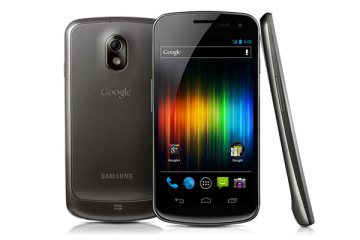
For all the attractions of Google’s Android mobile operating system, many smartphones based on it have a quality to which no gadget aspires: They’re less than the sum of their parts. The hardware can be clunky. Device makers slather on modified interfaces that hurt rather than help. Wireless carriers add pesky junkware. Did I mention that Android phones are frequently stuck with obsolete versions of the operating system?
Google knows about these issues, and its “Pure Google” Nexus handsets—which offer great hardware, nicely integrated with unsullied, up-to-date versions of Android—have aimed to sidestep them. Upon their release, both the Nexus One and the Nexus S became the best Android phones on the market. The only problem was that Android in its purest form was still nowhere near as refined as an iPhone.
(MORE: 50 Best iPhone Apps of 2011)
Now there’s the Galaxy Nexus, a new Pure Google phone which is, like the Nexus S, a collaboration between Google and Samsung. It’s the first handset to feature Android 4.0 Ice Cream Sandwich, Google’s ambitious new upgrade. Judging from the brief time I’ve had with a unit loaned to me by Google, Ice Cream Sandwich makes the Galaxy Nexus a bit of a breakthrough. This phone lives up to its potential in ways that even the Nexus One and Nexus S did not.
The Galaxy Nexus that Google provided is an HSPA+ version that works with T-Mobile, but the first one to go on sale in the U.S. will run on Verizon Wireless’s zippy 4G LTE network. As I write, Verizon hasn’t announced availability and pricing; my guess is “real soon” and “$300 or thereabouts,” respectively.
(MORE: Ask Techland: What’s the Deal with 4G? Is the New iPhone 4G?)
One of Android’s defining features is the openness that permits device manufacturers to put it on phones that vary widely in features, size and style. Despite that, most major Android handsets are actually pretty darn similar. They’re big touchscreen slabs, with displays that dwarf the iPhone’s 3.5″ screen.
If that’s the kind of phone that appeals to you, you’re going to like the Galaxy Nexus. It has a 4.65″ Super AMOLED screen—expansive even by Android standards and packing 1280 by 720 pixels for true HD capability. As with the AMOLED displays on other Samsung phones, this one offers remarkably vivid colors; it’s much crisper than the one on Motorola’s Droid RAZR. It also retains the Nexus S’s subtly curved glass, which adds to the general feel of refinement.
Big-screen phones aren’t better than smaller ones by definition–in fact, they can be a tad unwieldy, especially for one-handed operation. (There’s a limit to how far your thumb can stretch.) But I enjoyed this one, and found that its roominess permitted some of the most error-free typing I’ve ever managed using an on-screen keyboard.
Thanks to Ice Cream Sandwich, the Galaxy Nexus dumps what was until now a signature Android feature: Its reliance on hardware buttons. Previous Android phones have had four of ’em: One took you to the home screen, one let you step back to the previous screen, one pulled up menus and one was for search. It made for a cumbersome interface, especially since Google and phone makers kept changing their minds about the ideal order for the four buttons.
(MORE: Android Ice Cream Sandwich Explained)
Like Android 3.0 Honeycomb tablets such as Motorola’s Xoom, the Galaxy Nexus doesn’t have any dedicated buttons on its front at all. Instead, there are on-screen ones that appear as needed and which swivel when you rotate the phone. They include the home button and the back one, plus one which pulls up thumbnail images of the apps you’ve recently used so you can bop between them. (A menu button appears when apps require it, but Google seems to be trying to wean Android programs off their reliance on menus.) All in all, the software buttons make for a much more streamlined feel than their hardware-based predecessors.
article continues on next page…


